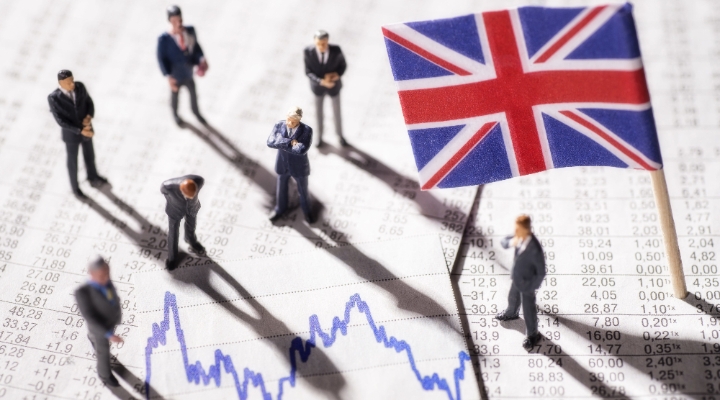This article is part of Morningstar's "Perspectives" series, written by third-party contributors. Here, Mike McGlone, at ETF Securities considers the attributes of the other precious metal silver.
Silver is the one of the world’s most versatile commodities. Also classified as a currency, silver is one of the world’s best conductors of electricity and heat. Its versatility is exemplified by its use in products ranging from electronics, antiseptics, solar panels, silverware and jewellery. In the commodity ETF world, silver ETF’s have among the lowest expense ratios, notably because silver is a quasi-currency with very low storage costs yet the majority of its demand is for industrial purposes. Demand is increasing rapidly along with increasing global per-capita incomes and rapid electrisation.
Silver Supply: Is There Enough?
Total silver supply has been stagnant the past few years and, unlike gold, total silver bullion inventories have been declining for years. Often viewed by investors as a leveraged play on gold, silver is an attractive longer term portfolio diversifier in our view, with a low correlation to most other major asset classes yet offering protection from currency debasement risk and inflation.
History indicates the recent decline in silver price volatility to the lowest levels in over a decade (at the beginning of May), as measured by 30-day volatility, may be a precursor to a strong price move. In our view, downside risk is limited with industrial demand picking up and supply in decline. With the silver price less than half its 2011 peak and futures shorts already elevated, we believe the next strong trend price move is likely to be up.
Total supply has been stagnant. A key factor holding back silver prices the past few years in our view has been increasing mining supply. The majority of silver is produced as a by-product of gold, zinc, lead and copper. About 25% of silver was from primary silver mines in 2013. Global mining supply increased 4% in 2013 to 741 million ounces but total supplies actually declined about 2.5% to 971 million ounces due to a sharp reduction in recycling. Secondary supply, notably recycling, in 2013 was the lowest since 1999 indicating the second most significant source of supply, next to mining, is not likely to increase unless the silver price increases. Total silver supply is expected to increase only about 0.7% in 2014 unless higher prices spur increased recycling.
Silver Demand: Industry and Investment
Demand is increasing rapidly. Q1 data on China demand showed a 22% YOY increase in silver imports, the largest quarterly gain since Q2 2010. China demand through April showed a 17% increase YOY. Every major area of silver demand is expected to increase in 2014, with the exception of photography1.
In 2014, the amount of demand for silver used in solar PV panels is expected to equal the demand for photography for the first time. Exemplifying the changing demand landscape for solar, in some parts of the world, solar power is near parity on a cost-per-watt basis with conventional forms of electricity production. This trend is likely to accelerate in our view, and more so as electricity storage technology improves, notably with potential help from people like Elon Musk and his plans for battery giga factories. Silver for solar will likely consume about 78 million ounces of silver in 2014, or 8% of total demand including investment, up from less than 1% in 2007 (CPM Group estimates).
Electrisation is rapidly changing our lives, notably for the four billion people identified by the World Bank from roughly 70 countries in the rapidly growing $4,000 to $11,000 per-capita income category, where consumer product consumption often increases more rapidly than per capita income. Silver is an integral part of all electronics, albeit in small quantities, but small enough to make it impractical to recycle, thus most silver used in electronics is removed from the market permanently, unless prices reach such levels to make such recycling economical. In 2013, about 288 million ounces of silver was used for electronics and solar; about 1/3 of total demand. In 1999, only about 11% of total silver demand was for electronics and solar.
Investment demand continues to grow. At the end of 2013, the total holdings of silver in ETPs (exchange traded products) stood at 623 million ounces, which although was down about 2% from the peak, was the greatest year-end amount ever for silver ETP’s holdings. Although gold ETP holdings have declined about one-third from the peak at the end of 2012, silver investors in coins, ETP’s and jewellery have been much more resilient. At the end of April 2014, silver ETP holdings increased 1.4% from the end of 2013 to 632 million ounces.
Should You Buy Silver Now?
In our view, the silver price is potentially poised for a strong upward move. Supply and demand indicators are turning price positive. Increasing demand from China, increasing investor demand and strong fabrication demand are being met with falling supply and dwindling inventories. The gold price decline last year weighed heavily on silver due to its high correlation to the metal and its much higher volatility. However, we believe the gold price has found a bottom and this weight should be removed from silver’s performance in 2014. Unlike gold, above ground available supplies of silver have been declining for years as fabrication demand has increased. The recent rise in US and China industrial indicators, a clearing of silver longs in the futures markets and elevated shorts increases the likelihood of a short covering rally that potentially sparks a more sustained upward rise of the silver price.
Morningstar Disclaimer
The views contained herein are those of the author(s) and not necessarily those of Morningstar. If you are interested in Morningstar featuring your content on our website, please email submissions to UKEditorial@morningstar.com.





























